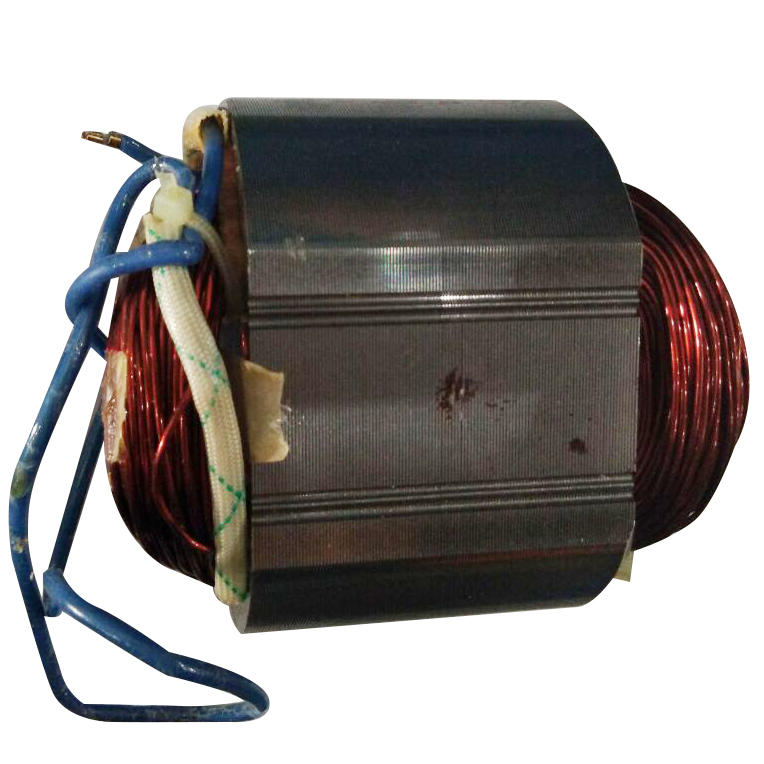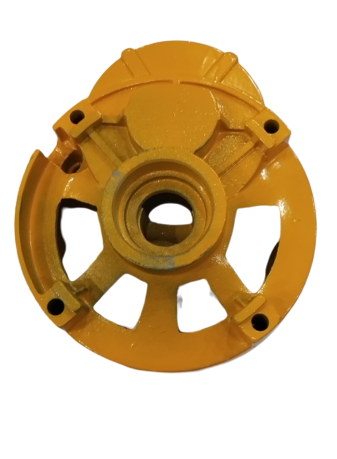The Engine of the Cut: Unveiling the Cut-Off Saw Stator
Within the heart of your cut-off saw lies a crucial component: the stator. This seemingly stationary element plays a vital role in generating the power that drives the cutting wheel. Here’s a breakdown of this essential part:
Function:
-
Power Generator: The stator doesn’t physically rotate, but it’s the foundation for generating the magnetic field that drives the motor. It houses a series of coils (windings) made from insulated copper wire. When electricity flows through these coils, it creates a magnetic field within the stator core.
-
Magnetic Duo: The stator’s magnetic field interacts with the magnetic field of the rotor (rotating component within the motor). This interaction creates a force that causes the rotor to spin at high speed. The rotating rotor shaft then transfers this power to the cutting wheel via gears or belts.
Construction:
- Core: The stator core is typically made from laminated electrical steel. This material helps to minimize energy losses due to eddy currents, which are electrical currents that can occur within the core and reduce motor efficiency. The laminations are thin sheets of steel electrically insulated from each other.
- Windings: Embedded within slots in the core are the windings, those insulated copper wires mentioned earlier. The specific configuration of these windings will depend on the type of motor used in your cut-off saw (AC or DC motor).
- Frame: The stator core and windings are housed within a sturdy metal frame that provides support and protection for the entire assembly.
Types of Stator Windings:
- AC Motors: These motors utilize alternating current (AC) to generate the magnetic field. The specific winding configuration depends on the number of poles on the rotor and the desired motor speed.
- DC Motors: In DC motors, the windings are arranged in a way that allows them to create a constant magnetic field. A commutator, a rotating component with segmented copper bars, helps to reverse the current direction in the windings and maintain continuous rotation. However, DC motors are less common in modern cut-off saws.
Maintenance:
- While the stator is a robust component, it can experience wear and tear over time, particularly in high-use environments. This can manifest as reduced motor performance, overheating, or even complete motor failure. Regular maintenance practices like keeping the saw clean and avoiding overloading the motor can help extend the stator’s lifespan.
Replacement:
- Replacing a damaged stator can be a complex task, especially for someone without experience in electrical repairs. It’s often best to consult a qualified technician for stator replacement. They can ensure the new stator is compatible with your specific cut-off saw model and properly install it for optimal performance and safety.
In Conclusion:
The stator, although unseen during operation, is the backbone of your cut-off saw’s motor. Understanding its function, construction, and maintenance needs allows you to appreciate its importance and take steps to ensure your saw operates efficiently and safely for years to come. Remember, when dealing with complex electrical components like the stator, consulting a professional for repairs or replacements is often the safest and most reliable option.












Reviews
There are no reviews yet.